Sprouting has existed for thousands of years, with ancient Chinese Medicine practitioners even prescribing sprouts for a number of ailments. However, sprouts have experienced a resurgence in popularity over the last decade as interest in healthy eating has also increased.
Now, fresh sprouts are becoming all the rage in the culinary world. You’ll see them added to salads, sandwiches, soups, juices, smoothies, and even snacks. And rightly so because they can provide many important nutrients.
As we face the potential for disruptions in the food supply chain, and with more people than ever wanting to optimize their health and grow their food, it’s time to give sprouts a fresh look.
What Are Sprouts?
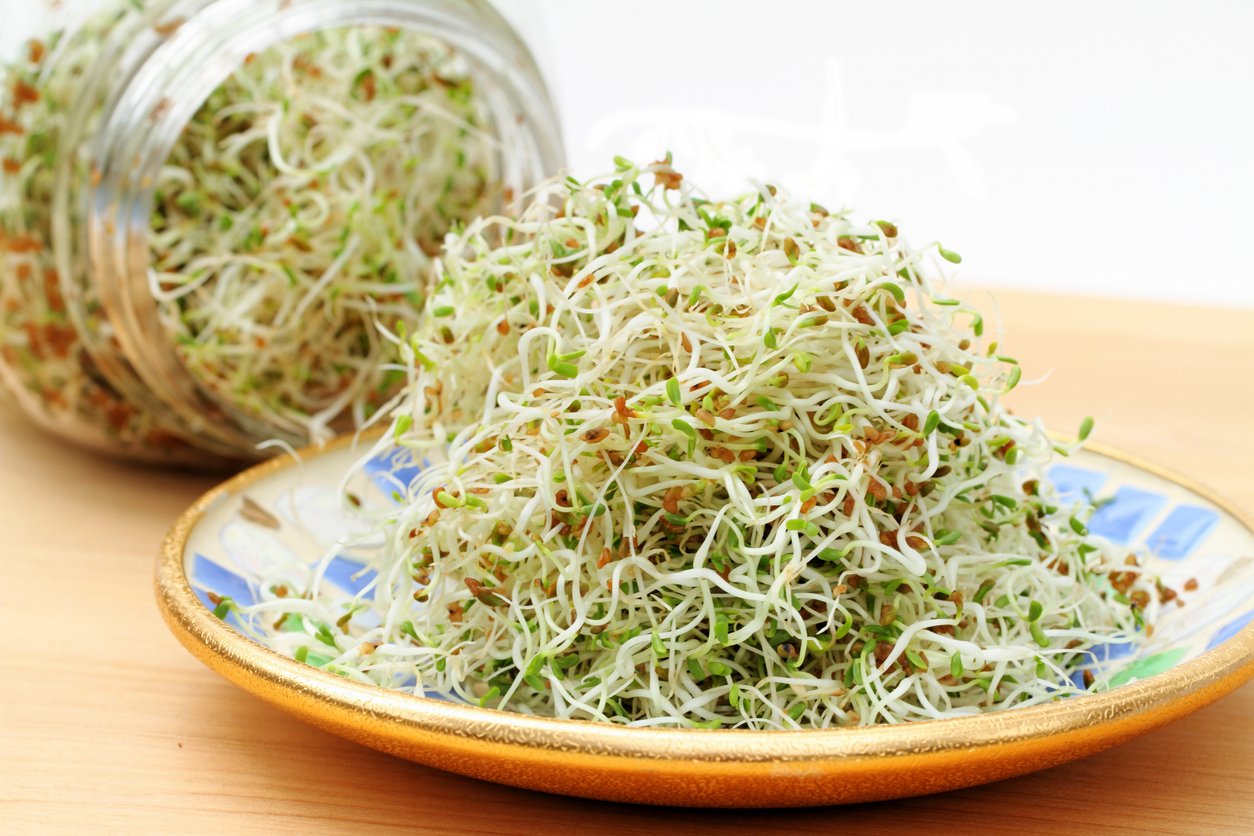
Sprouts are tiny germinated plants that have begun to grow from the seeds of vegetables, grains, and beans. The germination process usually starts with soaking the seeds for several hours. Over time, shoots and roots will grow out of the seeds.
Sprouts can grow for two to seven days and typically measure up to two (or more) inches long when ready to eat.
Types of Sprouts
Sprouts can come from many plants. Some of the most commonly found sprouts include those made from:
- Nuts and seeds, such as almond, radish, alfalfa, pumpkin, and sunflower seeds
- Beans and legumes, such as lentils, chickpeas, soybeans, mung beans, kidney beans, and green peas
- Grains, such as quinoa, oats, Kamut, amaranth, and brown rice
- Vegetables, such as broccoli, clovers, beets, and mustard greens
Many people wonder if sprouts are the same as microgreens. However, sprouts are actually different from microgreens. Most sprouts are grown with only water, sunlight, and air for inputs and are typically ready to eat within days. Microgreens, on the other hand, have edible leaves and stems, are typically grown in a soil mix or a fiber mat, and take seven to 21 days of growth before harvest.
Sprouts Nutrition
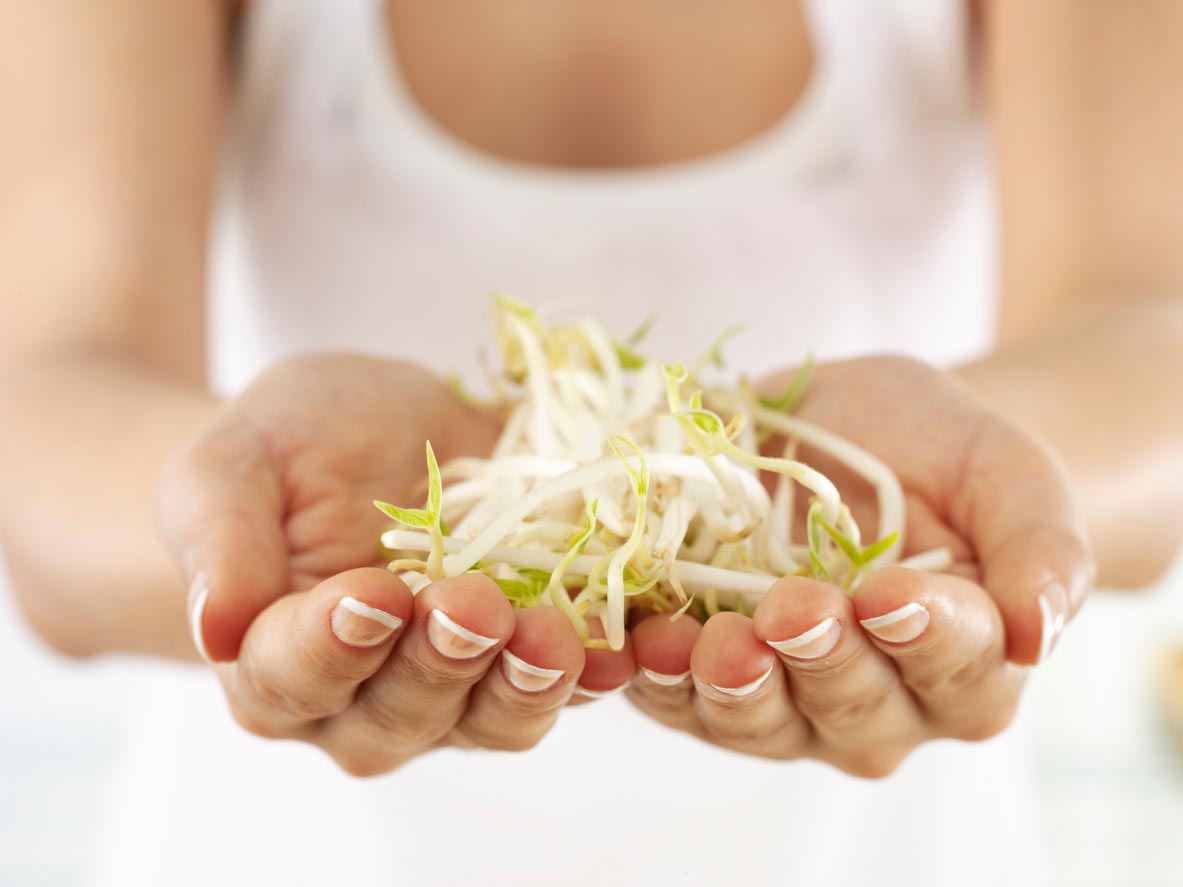
Although every sprout has a different micronutrient balance, many sprouts are rich in vitamins, minerals, antioxidants, and other phytochemicals.
A one-cup serving of mung bean sprouts, for example, has the following nutritional profile:
- Calories: 31
- Protein: 3.2 grams
- Total Carbohydrates: 6.2 grams
- Fiber: 1.9 grams
- Vitamin K: 34.3% of the Daily Value (DV)
- Vitamin C: 13.7% of the DV
- Folate: 63.4% of the DV
- Manganese: 9% of the DV
- Copper: 19% of the DV
Seeds are amazingly concentrated sources of important nutrients. Sprouting increases their nutrients, making sprouted foods even richer sources of protein, folate, magnesium, phosphorus, manganese, and vitamins C and K than the same seeds before they’re sprouted. Note, however, that the nutritional value of sprouts tends to decrease when heated.
6 Potential Benefits of Sprouts
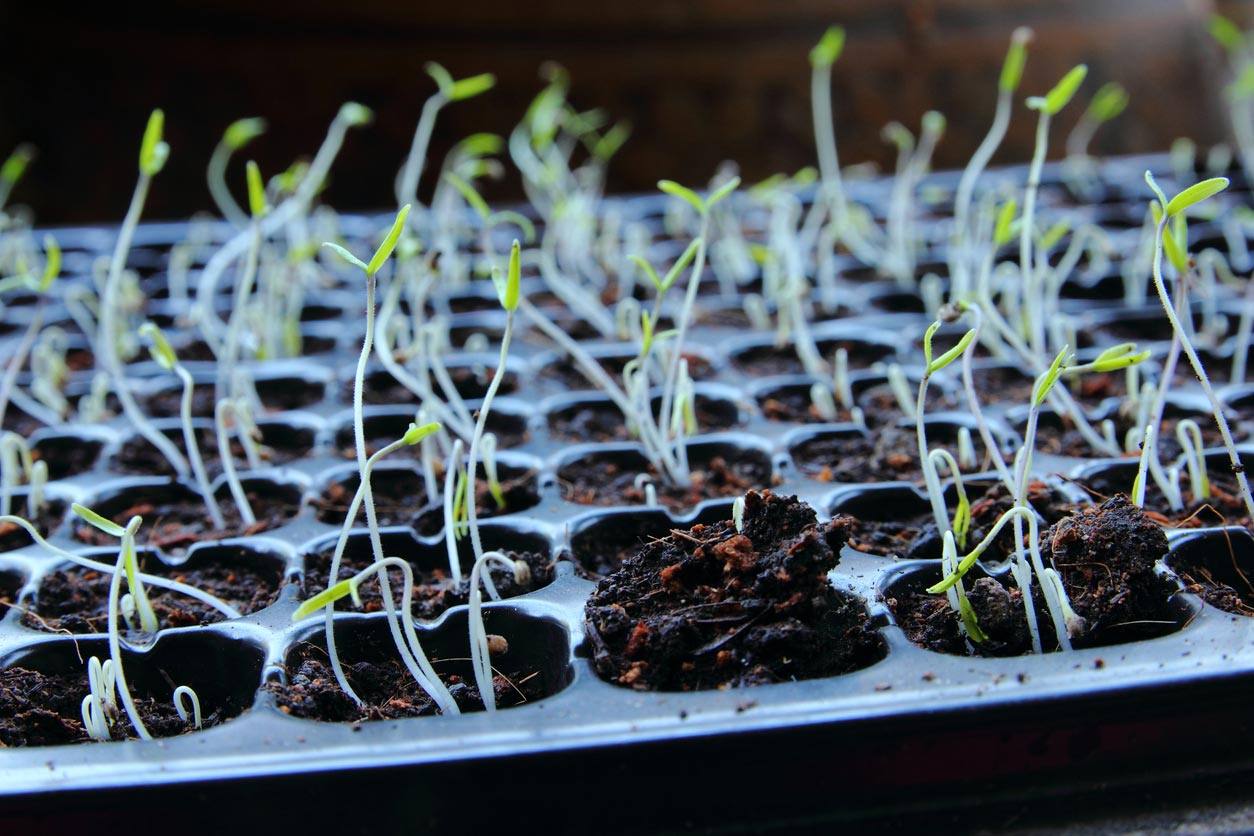
In addition to being a rich source of nutrients, sprouts have many other health benefits.
1. Sprouts and Immunity
Sprouts are an especially good source of vitamins C and K, which protect the immune system. Vitamin K plays a role in reducing immune-mediated inflammation, and vitamin C is a known antioxidant that protects the body against environmental oxidative stresses and free radicals.
Sprouts also contain some vitamin A, which is an essential vitamin for enhancing immunity.
Mung bean sprouts, in particular, contain flavonoids, acids, and plant hormones that may all play a role in the modulation of human immunity.
(To learn about 14 more foods that can strengthen your immune system, click here.)
2. Sprouts for Diabetes

A 2013 study published in the Journal of Medicinal Food found that young broccoli sprouts may be an effective supplement in managing type 2 diabetes due to their high amounts of bioactive compounds like sulforaphane, which can help regulate blood sugar and support healthy lipid metabolism.
Other research suggests that enzymes in soybean sprouts may regulate carbohydrate digestion in the body and help prevent hyperglycemia.
In a 2015 study, researchers examined the impact of sprout consumption on hemoglobin A1C — an indicator of long-term blood sugar control. Compared to the control group, those who ate 60 grams of lentil sprouts daily for eight weeks saw a 10% reduction in A1C, while the control group saw a 12% increase in A1C.
3. Sprouts for Digestion
Fiber is an important nutrient for digestive health. Getting enough fiber not only helps reduce your risk for a number of chronic diseases, but it also helps maintain bowel regularity and promotes healthy gut bacteria. When you’re eating enough fiber, going to the bathroom can be a moving experience indeed.
Sprouts are an excellent source of dietary fiber. Research has shown that sprouted seeds and legumes have more fiber than their unsprouted counterparts. The fiber in sprouts is also more available to the body.
A 2016 study published in the International Food Research Journal found that the total fiber content of kidney beans, mung beans, soybeans, and peanuts significantly increased when sprouted. Both the soluble and insoluble fiber content increased with the sprouting, or germination, of the seeds. When beans were left to germinate until their sprouts reached .2 inches (5 mm) long, their fiber content increased by 226%.
A similar 2005 study compared the fiber content of ready-to-eat sprouts with small radishes, rapeseeds, and white mustard seeds. The researchers found that the ready-to-eat sprouts had 20% more fiber.
4. Sprouts for Heart Health

Some sprouts may contain bioactive compounds that are protective of heart health. Test tube and animal research suggest that the sulforaphane in broccoli sprouts can fight high blood pressure, protect the heart muscle, and lower cholesterol.
In a none-too-kind 2015 animal study, researchers examined the ability of chickpea sprouts to lower blood fat levels in female rats, compared to the use of atorvastatin, a standard antihyperlipidemic medication. At the end of eight weeks, researchers measured the rats’ body weight, organ weight, and blood and liver fat profiles. Rats who ate the germinated chickpea sprouts experienced a significant increase in HDL “good” cholesterol and body and organ weights compared to controls. They also saw normalization in both blood and liver fats. The atorvastatin also normalized blood and liver fat levels but did not produce the other substantial positive effects of the sprouts.
5. Sprouts and Liver Health
The sulforaphane content of certain sprouts, like broccoli sprouts, may also improve the health of your liver and cells.
A 2015 study published in the World Journal of Gastroenterology examined how broccoli sprouts affected liver abnormalities among Japanese adult men with fatty liver disease. The men were given broccoli sprout extract capsules daily for two months, after which their oxidative stress and liver function markers were measured and compared to the original values. The broccoli sprouts decreased serum levels of the markers for liver disease and measures of oxidative stress.
6. Sprouts and Cancer

Many studies have suggested that broccoli and broccoli sprouts may also have protective effects against cancer. Although more research is needed, studies indicate that sulforaphane, in particular, has anticancer effects against prostate, breast, and urinary cancers.
Sprouts Safety
Many people stopped buying sprouts because they were concerned that dangerous foodborne pathogens could grow on commercial sprouts during their growth cycle, in transit, or once they’re on shelves. As a result, many grocery stores stopped selling them in their produce sections.
Over the last two decades, the US Food and Drug Administration (FDA) linked multiple outbreaks of foodborne illness to the sale of raw or lightly cooked sprouts. Commercially grown alfalfa, mung bean, and clover sprouts, in particular, come with some risk of E. Coli or Salmonella contamination.
To make commercial sprouting safer, the FDA’s Center for Food Safety and Applied Nutrition released guidelines implementing measures such as improved seed management, seed testing and certification, and sanitary practices during the sprouting process.
By law, many commercial sprouts and their seeds are now grown with disinfectants like chlorinated water to reduce the risk of contamination. As you may expect, some of this chlorine persists in the sprouts we eat. Furthermore, some studies have found that chlorine treatment is not always completely effective in sanitizing sprouts.
Because of the potential risk associated with eating sprouts, children, pregnant women, the elderly, and people with generally weaker immune systems are often encouraged to thoroughly cook sprouts — especially if they come from a store.
The good news is that you can have more control if you grow them at home. It doesn’t completely eliminate risk, but good practices can help a lot. More on home growing is coming right up!
If you’re interested in learning more about sprout safety, Dr. Jed Fahey, the “Grandfather of Broccoli sprouts,” and Doug Evans, author of The Sprout Book, collaborated and published a thoughtful paper on the topic, “Sprout microbial safety: A reappraisal after a quarter-century.” They conclude that sprouts are highly nutritious and safe when proper sanitation and seed testing practices are followed.
How to Grow Sprouts
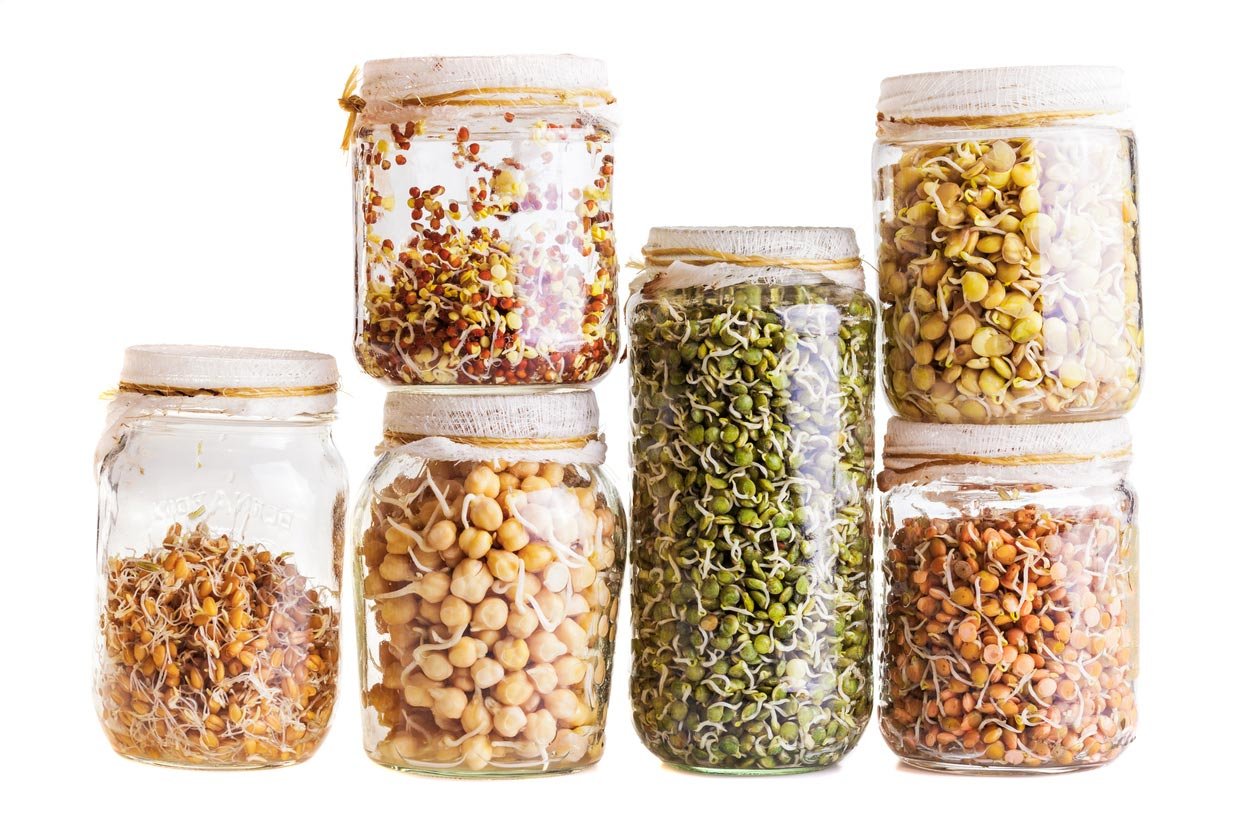
You can grow sprouts at home, a practice that only requires a few minutes daily. We recommend purchasing seeds sold for sprouting that are certified organic, tested for pathogens, and tested for a high germination rate.
If you choose to grow your sprouts, it’s still important to be careful about sprout contamination and food safety. Make sure to wash your hands and sterilize your sprouting materials between batches (a dishwasher can do the trick!).
If you want to go the extra mile, consider treating the seeds in a solution of 3% hydrogen peroxide preheated to 140 F for five minutes, white vinegar at 3% acid (three parts vinegar + two parts water), or sodium hypochlorite/scent-free bleach (one part bleach + nine parts water). Soak for 15 minutes, then rinse and drain thoroughly before soaking.
You can grow your sprouts by purchasing a Sprouting Kit from The Sprouting Company or following the steps outlined below.
Materials for Sprouting:
- Mason jar with lid
- Water
- Sprouting screen or cheesecloth that you’ll cut with scissors
- Rubber band
- Seeds or lentils (suitable for sprouting)
Directions for Growing Your Own Sprouts:
- Add your seeds (three tablespoons for a one-quart mason jar or four tablespoons for a half-gallon jar) to your jar, cover with two cups of water, and put on the sprouting screen or cheesecloth. Let it sit overnight or for at least eight hours at room temperature.
- The next day, drain the water from your seeds. Rinse them with fresh water, swirl them around, and then drain the water from them again. (Pro tip: Rest the mason jars upside down diagonally on a drying rack to keep water from pooling at the bottom of the jar.)
- Repeat the rinsing and swirling process twice daily until the sprouts grow to the size you like. This usually takes two to seven days.
- When your sprouts form, rinse them one last time, let them dry, and transfer them to a produce bag or airtight container. Store in the fridge and use within three to five days.
Editor’s Note: Food Revolution Summit speaker and best-selling The Sprout Book author Doug Evans has created a helpful course, “Let’s Sprout!”, that tells you all about sprouts, including why they’re so good for you and how to grow a wide variety of them easily, enjoyably, safely, and with minimal equipment. You’ll also get step-by-step, highly nutritious recipes — from simple salads and wraps to sprout popcorn, smoothies, and even sprout ice cream (yup, for real!). Find out more and check it out for free right here.
How to Store Sprouts
Proper storage is essential to maintaining the freshness and quality of your sprouts for as long as possible.
Sprouts will typically stay fresh in the fridge for around three days. But the sooner you eat them, the better.
To extend shelf life, you can wash your sprouts daily in cold water. Just be sure to let them dry out after every rinse before placing them back in the fridge.
How to Include Sprouts in Your Diet
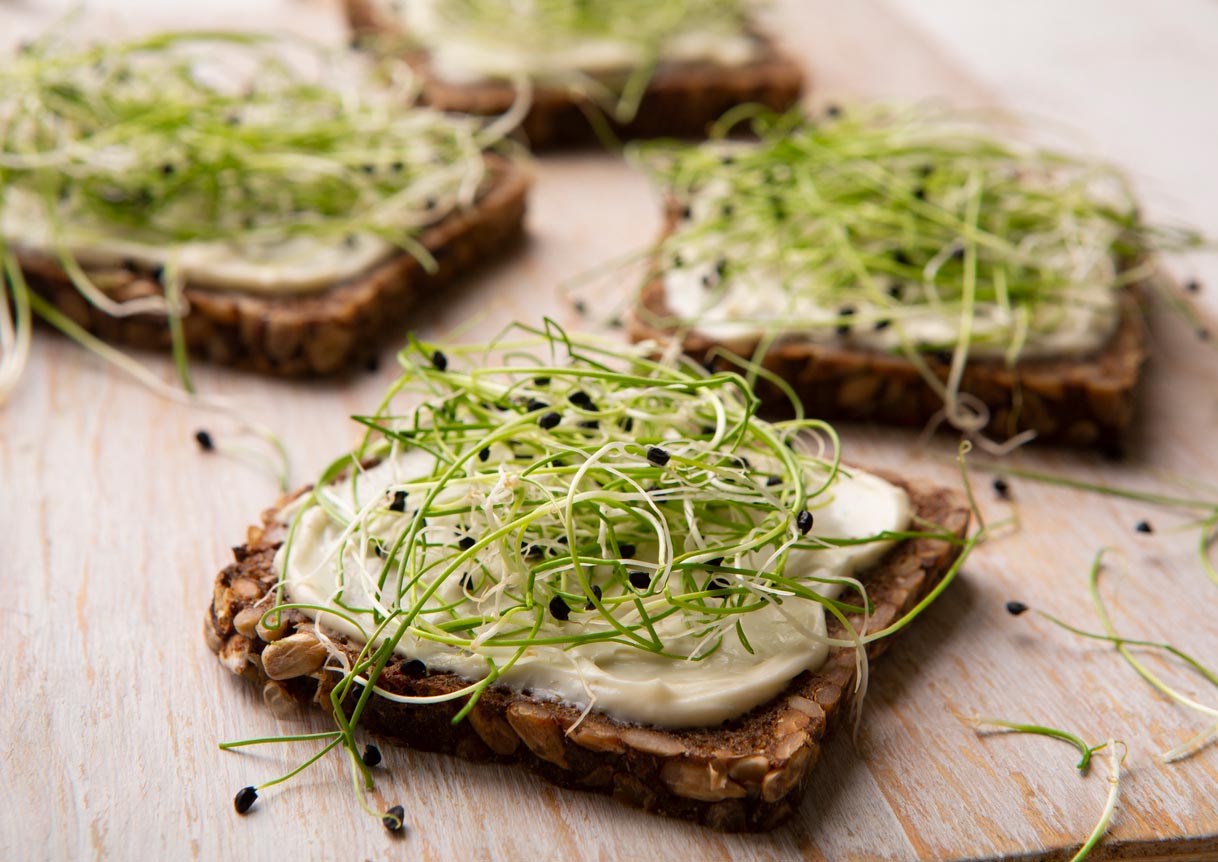
Sprouts and microgreens are easy to incorporate into your diet in a number of ways.
Some of the best ways to enjoy sprouts include:
- Sprinkled onto oatmeal or atop a bowl of granola
- Mixed into other greens as part of a salad
- Stirred in with the other veggies in stir-fries
- Added to smoothies — especially green smoothies
- Added to dips, like hummus or bean dip, or creating a dip entirely from sprouts
- Used as a garnish for cooked dishes like soups, chili, and pizza
- Layered into sandwiches, tacos, burritos, and (plant-based) hot dogs
- Eaten raw, snacked on by the handful
- Boiled to create a hearty base for soups and casseroles.
Healthy and Delicious Sprouts Recipes
Sprouts are incredibly versatile and can be used in a variety of dishes. They can be added to salads, sandwiches, smoothies, and soups. One of my favorite recipes is a sprout salad with different sprouts, avocado, cherry tomatoes, cucumber, and a light lemon-tahini dressing.
Another great way to use sprouts is in wraps or as a topping for grain bowls, where they add a fresh, crunchy texture. Sprouts can also be blended into green smoothies for an added nutritional boost. I even love sprouts as a very healthy alternative to rice and pasta!
1. Raw Tomato Basil Sauce With Sprouts
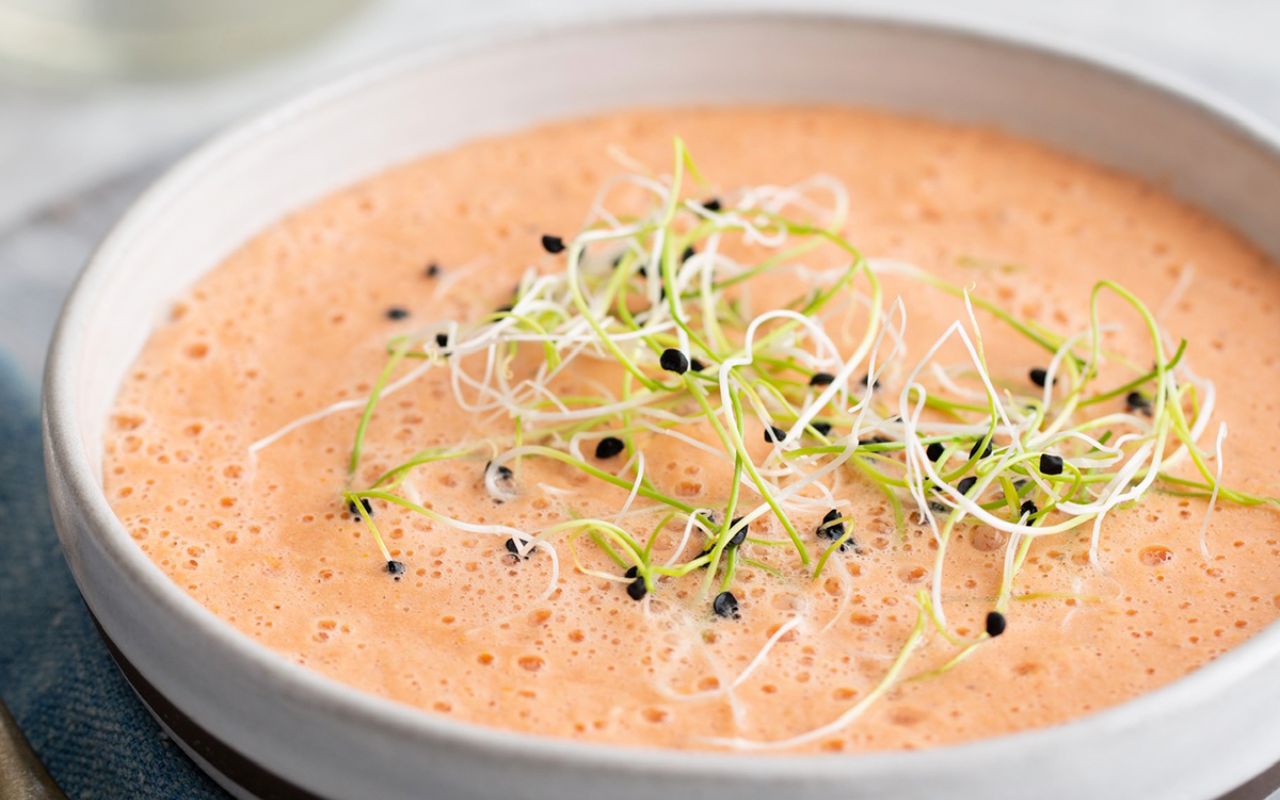
This Raw Tomato Basil Sauce With Sprouts is bursting with flavor and nutrition, thanks to a mix of nutrient-rich sprouts that add a fresh, crunchy twist. Paired with tomatoes, basil, and garlic, it’s a tasty and wholesome option for salads, wraps, or pasta!
2. Super Green Sprout Smoothie
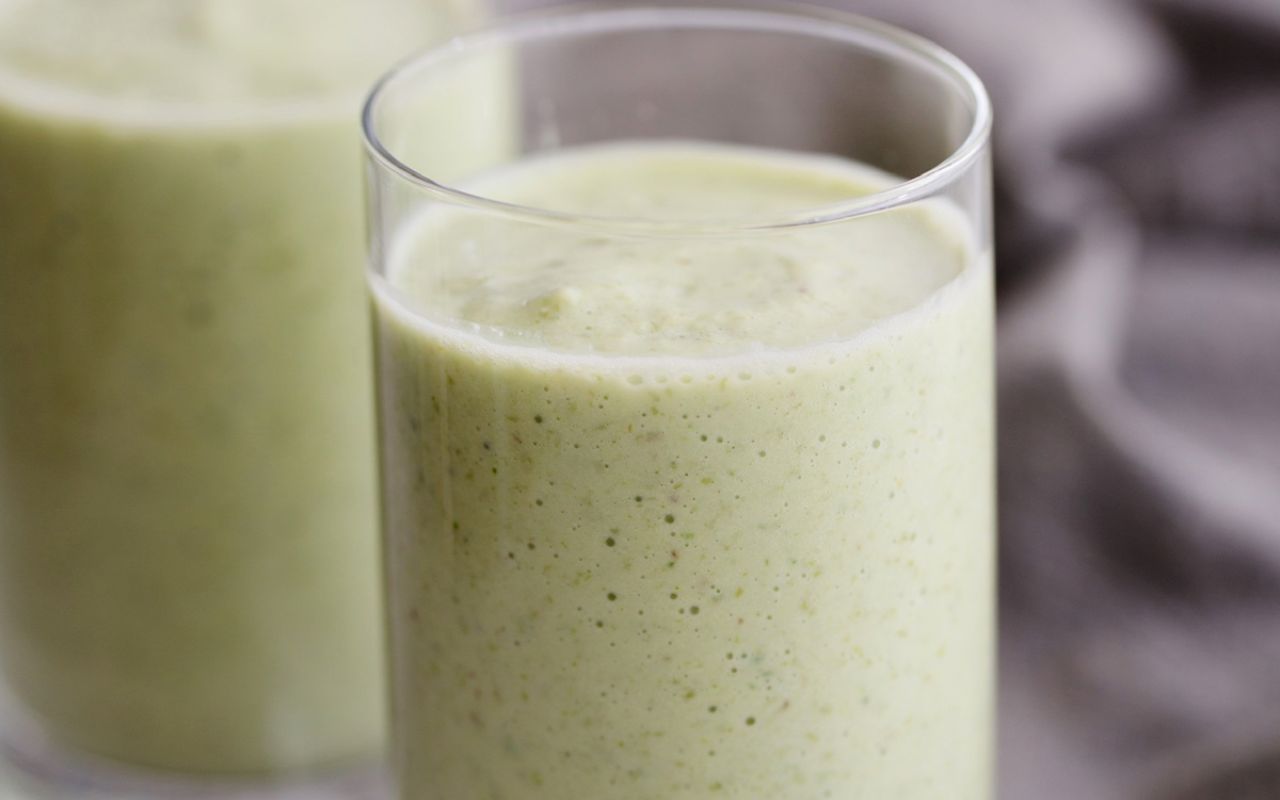
The Super Green Sprout Smoothie is a super-refreshing, nutrient-packed way to start your day! Loaded with mung bean and green pea sprouts, it’s full of vitamins, minerals, and enzymes that help with digestion and overall health — plus, it tastes great!
3. Mushroom-Lentil Pâté
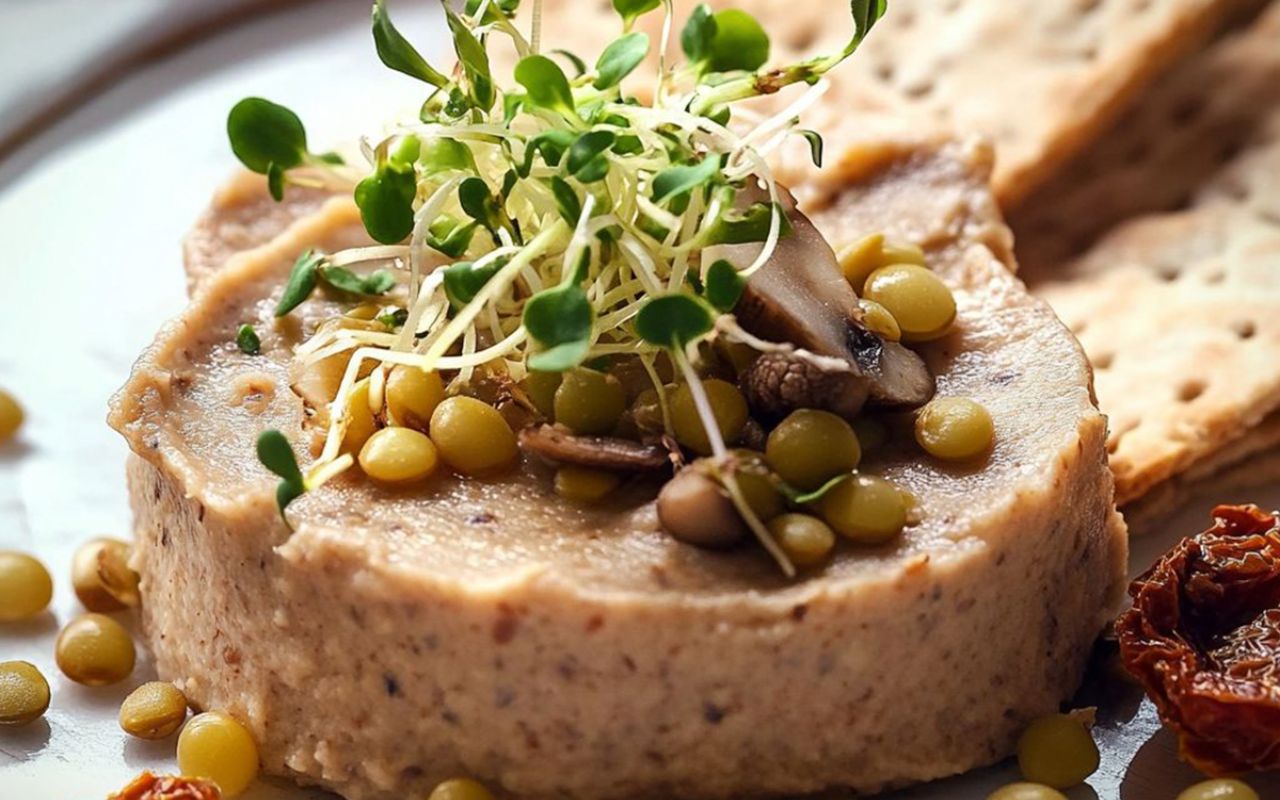
Rich, savory, and packed with nutrients, this Mushroom-Lentil Pâté blends earthy porcini mushrooms, sprouted lentils, mung beans, and walnuts into a flavorful spread. Enhanced by sun-dried tomatoes and a mix of aromatic spices, it’s the perfect healthy snack or appetizer that showcases sprouts in an exciting new way!
Should You Eat Sprouts?
Homegrown sprouts are a healthy, nutrient-packed, and delicious food that you can enjoy in countless ways. They can serve as a fresh, raw food source when other sources are inaccessible. However, they can also be a source of bacterial pathogens, so it’s important to employ proper washing and storage methods. There are alternatives to traditional fresh bean sprouts, such as microgreens or canned sprouts, which you can use similarly with less or no risk of bacterial contamination. However you wish to enjoy them, do so in good health!
Whether you’re new to sprouting or looking to upgrade your setup, click here to learn more and enjoy a special discount for Food Revolution Network members. If you purchase through that link, the discount will be automatically applied at checkout, and The Sprouting Company will contribute a portion of the proceeds to support FRN’s mission (thank you!).
Tell us in the comments:
- Do you enjoy sprouts? How do you like to eat them?
- Have you ever grown your own sprouts at home?
Feature image: iStock.com/Marc Belair



